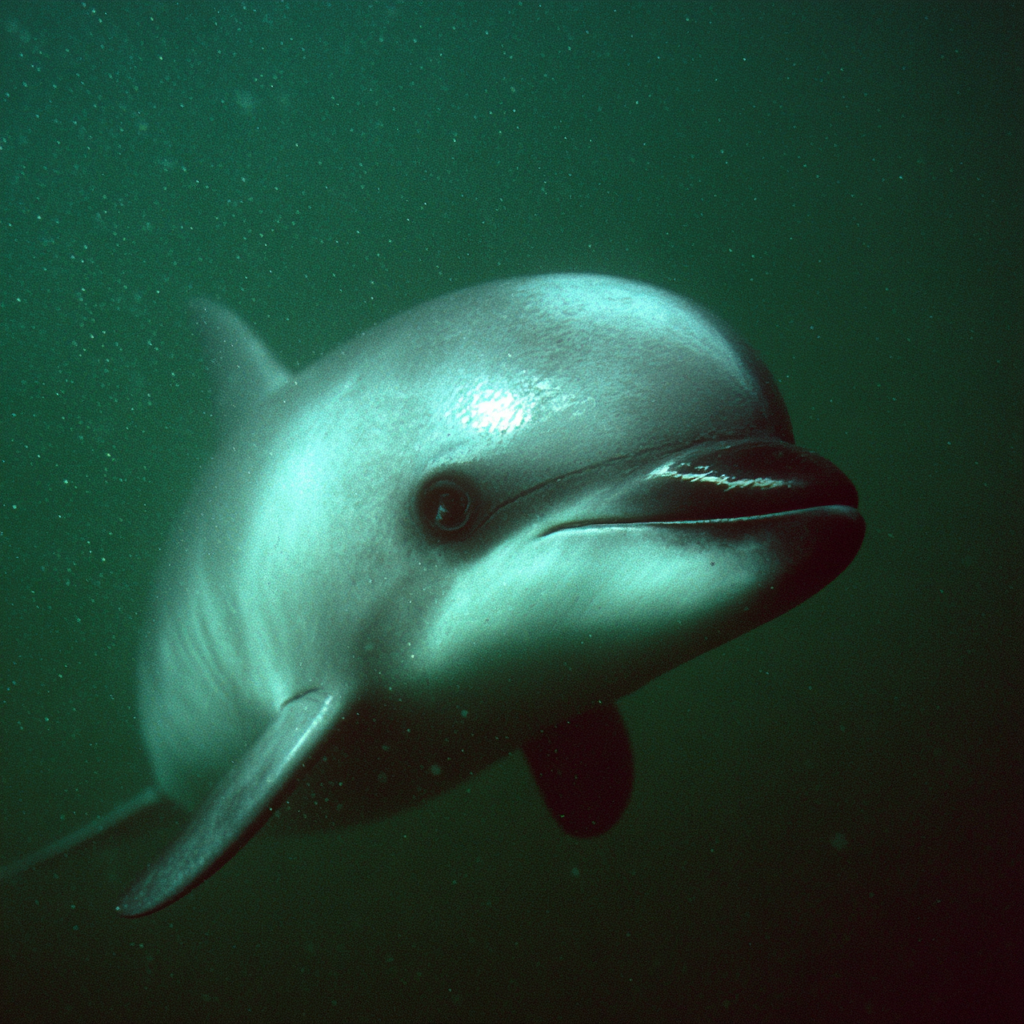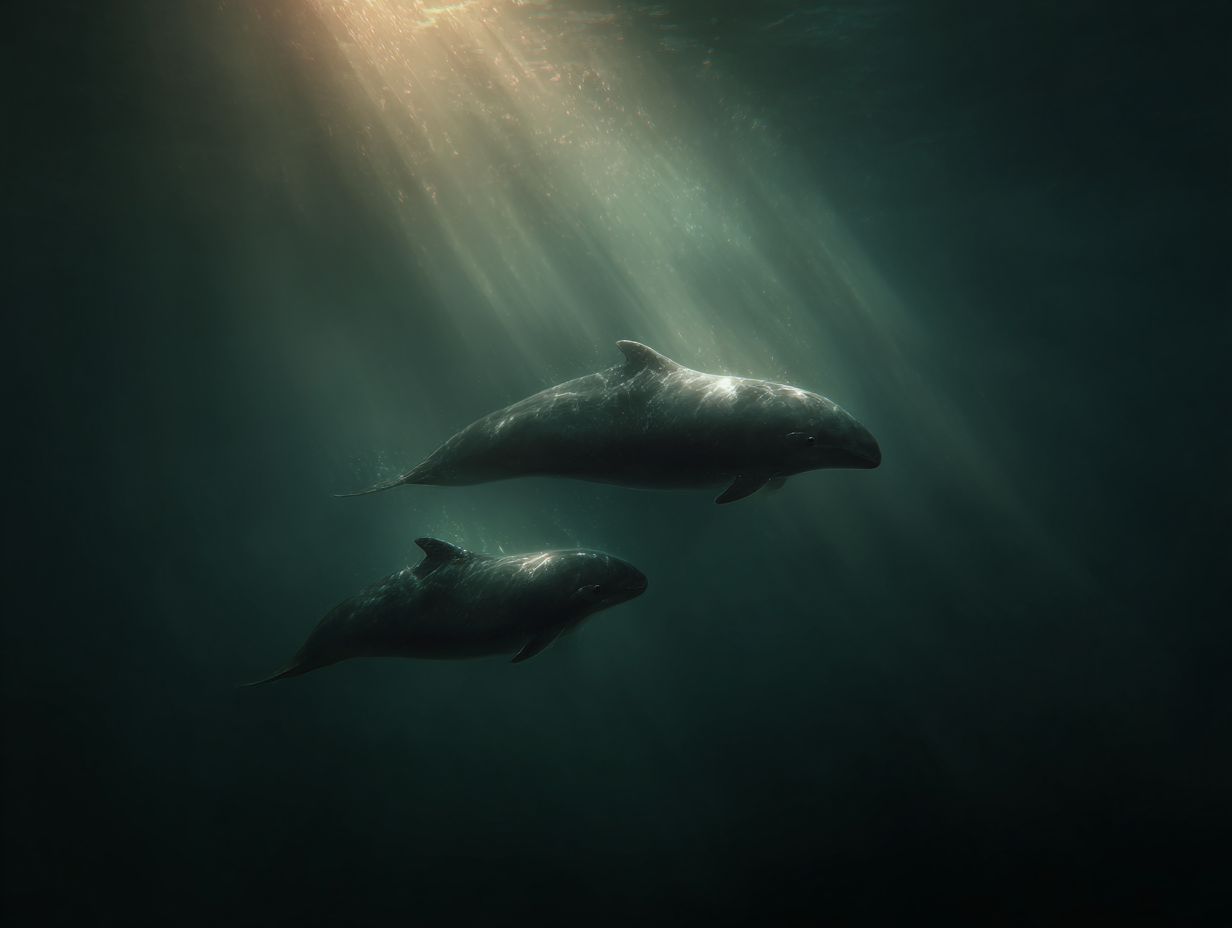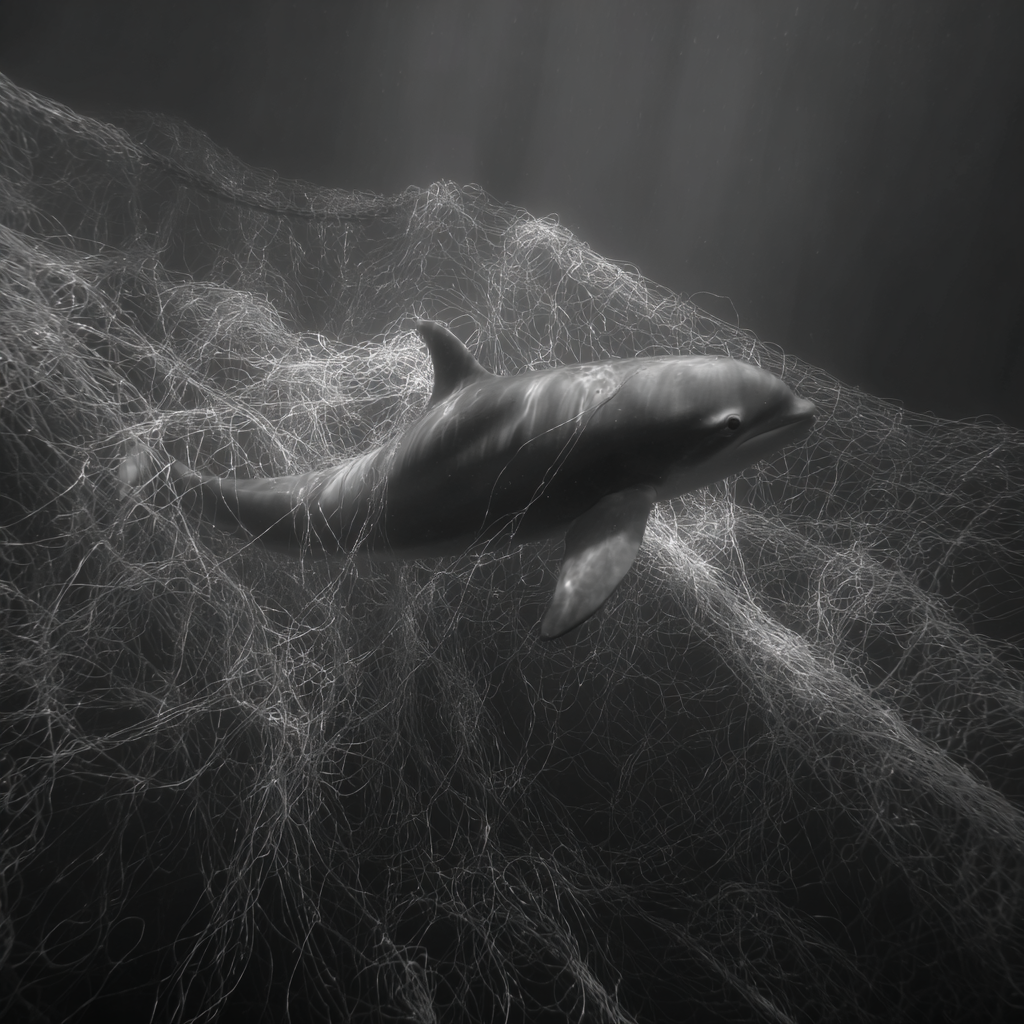Its local nickname, vaquita, means "little cow," but some fishermen have called it duende—the goblin, or the ghost—a fitting name for a creature so rarely seen that its presence is felt more as an absence. The Vaquita is the ultimate threshold guardian; its imminent disappearance is not a whisper of a warning, but a final, desperate alarm bell for the consequences of human greed and neglect.
Population Decline: 98% population loss since 2011
Current Status: Fewer than 10 individuals remaining
Timeline: Discovered 1958 → Possibly extinct within 70 years

The Totoaba Connection
The vaquita's extinction is not the result of habitat loss, climate change, or pollution—though all these factors play a role. It is being killed by gillnets set illegally for another species: the totoaba fish. The totoaba is a large fish endemic to the same waters, and its swim bladder is considered a delicacy in traditional Chinese medicine, fetching prices of up to $46,000 per kilogram on the black market.
The demand is driven by criminal enterprises operating across international borders. Mexican cartels have taken over the illegal totoaba trade, using the same smuggling routes and violence that define the drug trade. Fishermen are paid handsomely to set gillnets in vaquita habitat, and the Mexican government has been unable or unwilling to stop them.

Failed Rescue Attempts
The international community has not been silent. In 2017, conservation groups attempted a desperate plan: capture the remaining vaquitas and breed them in captivity until the gillnet threat could be eliminated. The plan, called VaquitaCPR, ended in tragedy when one captured vaquita died of stress. The effort was immediately abandoned.
Mexico has banned gillnets in the vaquita refuge, deployed navy ships, and offered compensation to fishermen. None of it has worked. The nets keep going out, and the vaquitas keep dying.

A Final Warning
The vaquita is what conservation biologists call a "threshold guardian"—a species whose extinction marks a point of no return, not just for itself but for the integrity of an entire ecosystem and our capacity to prevent such losses. If we cannot save the vaquita, a species whose plight is well-documented and whose salvation requires only the enforcement of existing laws, then what species can we save?
With fewer than 10 individuals remaining, the vaquita may already be functionally extinct. Even if a few survive, the population may be too small to recover. We are witnessing, in real time, the final moments of a species that has existed for millions of years.
References
- PMC - The critically endangered vaquita is not doomed to extinction by inbreeding depression
- Science - Genomic and population viability analyses suggest that the vaquita porpoise is not doomed to extinction
- PLOS ONE - Exploring Trade-Offs between Fisheries and Conservation of the Vaquita Porpoise Using an Atlantis Ecosystem Model
- Endangered Species Research - More vaquita porpoises survive than expected: 2019 and 2021 survey results
- National Geographic - The vaquita nears extinction
- National Geographic - Vaquita porpoises may still recover—but only if illegal fishing ends now
- Smithsonian Ocean - A History Entwined: Vaquita, Totoaba, Fishermen
- IUCN Cetacean Specialist Group - Vaquita: Conservation status and threats
- NOAA Fisheries - Vaquita: Species profile and conservation efforts
- World Wildlife Fund - Vaquita conservation and protection measures